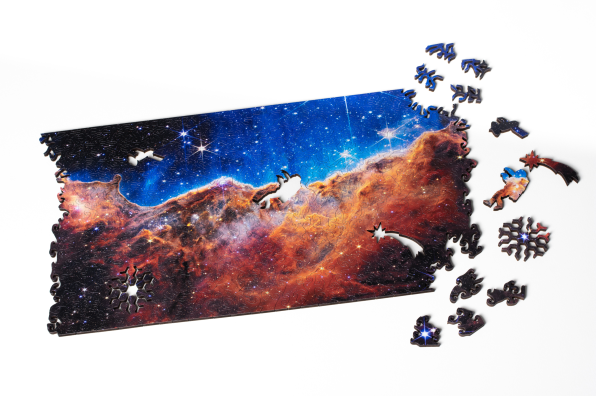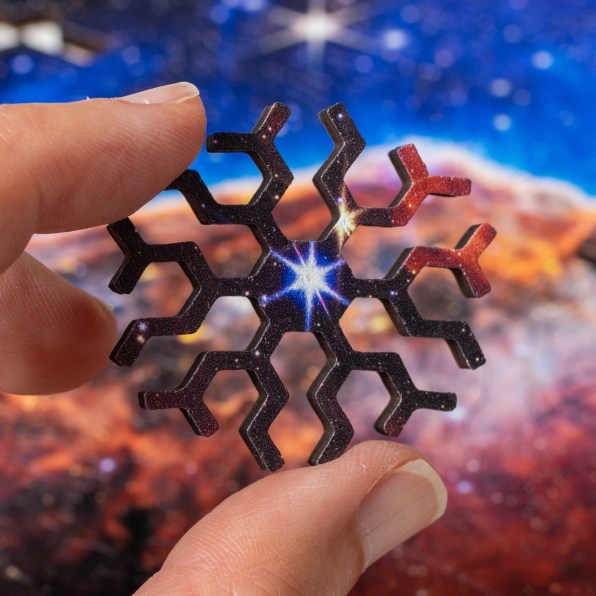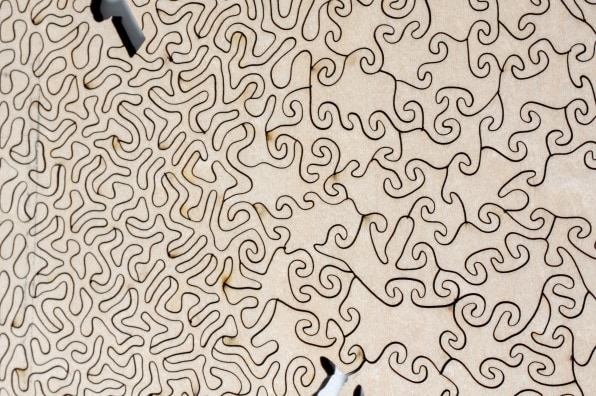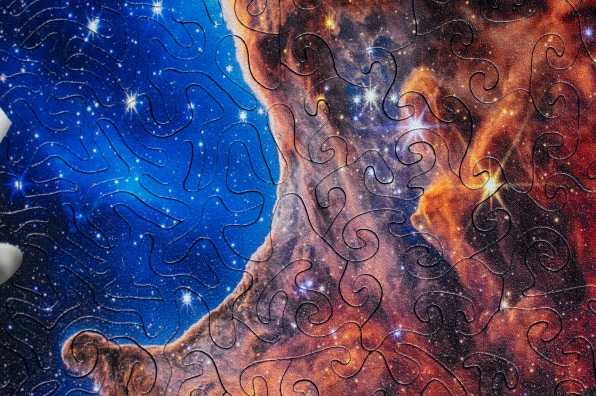This phenomenal puzzle captures the ‘cosmic cliffs’ from the James Webb Space Telescope
Ever since NASA revealed the astonishing images from the James Webb Space Telescope last week, the so-called cosmic cliffs have been turned into mouse pads, bumper stickers, canvas shoes, and, now, jigsaw puzzles.
But this isn’t your typical puzzle. The Cosmic Cliffs Infinite Galaxy Puzzle counts 264 squiggly pieces that can be reconfigured in endless ways. Created by scientists at the Massachusetts Institute of Technology, it’s designed using custom software, made of maple plywood, and laser-cut in upstate New York. The galactic images may no longer be all over the web, but for $75 you can now re-create the dazzling cosmos in your living room.

The Cosmic Cliffs puzzle was designed by Nervous System, a design studio cofounded by two MIT students—one in math and computational science, the other in biology and architecture. It joins a vast ecosystem of gorgeously designed puzzles, many of them born during the Great Lockdown of 2020, but the inspiration for it goes way back.

After a trip to Paris, the duo fell in love with hand-cut wooden puzzles and how they looked before they were mass-produced in the early 1900s.
“We felt we could use our techniques to bring back some of that artistry and uniqueness that comes from hand-cut puzzles,” says cofounder Jesse Louis-Rosenberg (the math student).

It all starts with custom-built software, which generates the pattern. In this case, the puzzle has two configurations: squiggly shapes for the cliffs and wavy ones for the star field. Four whimsical pieces complete the set in the shape of an astronaut, a shooting star, a satellite, and the telescope’s gold mirrors. Then, the puzzle is laser-cut and the image is printed straight onto the plywood surface using a UV printer.
“We have a very weird company that’s all about designing things using software we write, all inspired by natural processes and simulations of things [like] how coral grow and how leaf veins form,” Louis-Rosenberg says.

It’s a thing of beauty, but most impressive is the fact that it can be assembled in thousands of different ways. Nervous System calls this the Infinity Puzzle.
The idea is to create a puzzle with no straight edges. Each piece can fit in only one place, but the design loops around: If the left and right edges of the puzzle were wrapped around a cylinder, they would meet seamlessly, so you can take one piece from the “left side” and place it on the “right,” and keep rebuilding the puzzle as you wish. (The image had to be modified slightly so it could loop seamlessly.)
The ingenious design makes the level of difficulty more consistent, compared to that of a regular puzzle, where you start with the edges (easy), scramble in the middle (hard), then fill in the remaining gaps at the end (easy). It also means that, much like the universe, the puzzle has no end.
(23)


